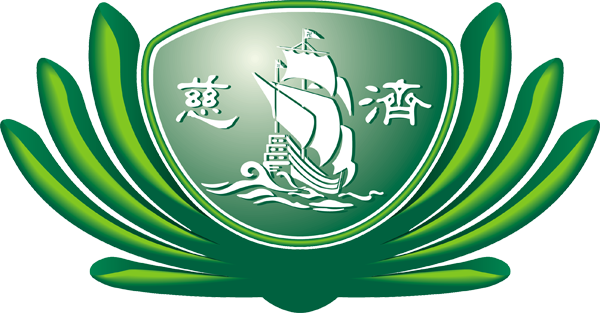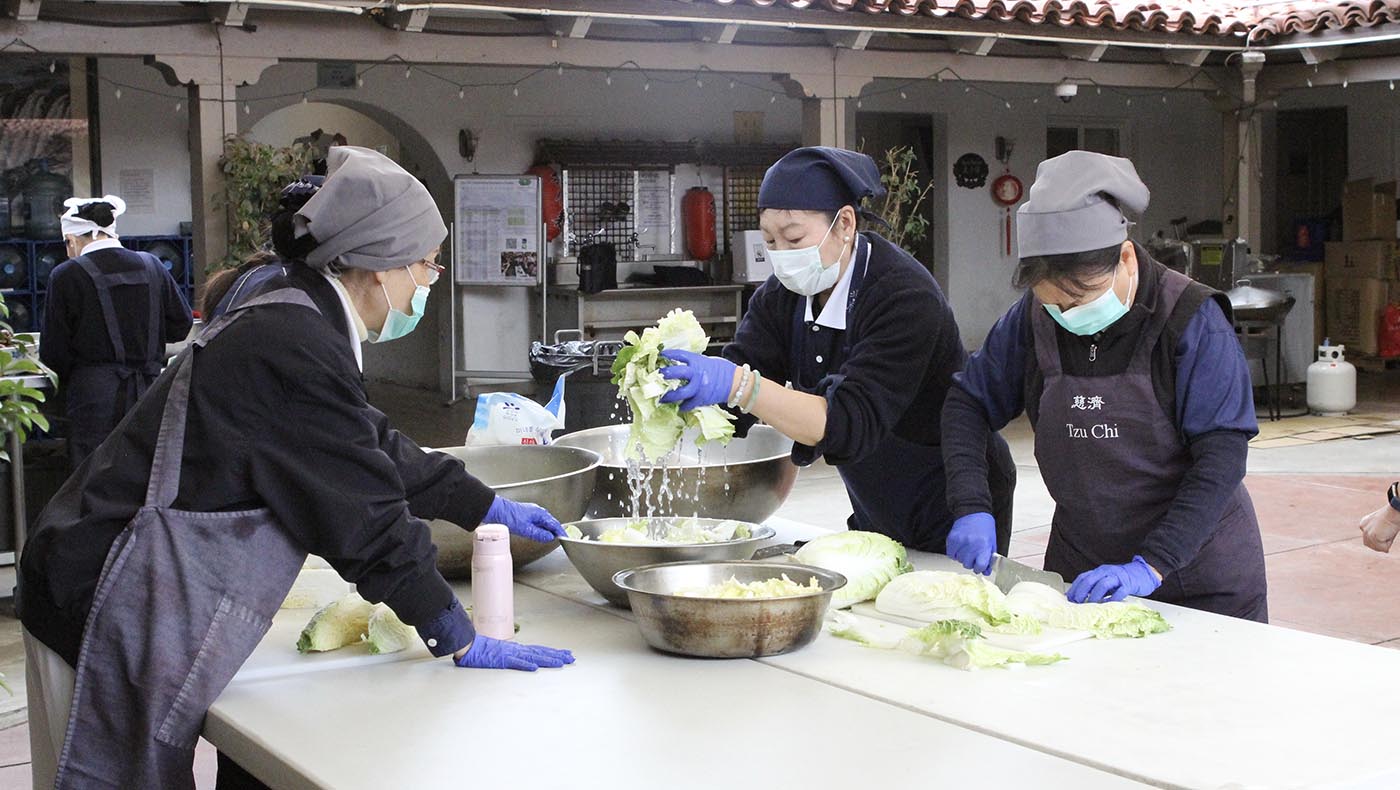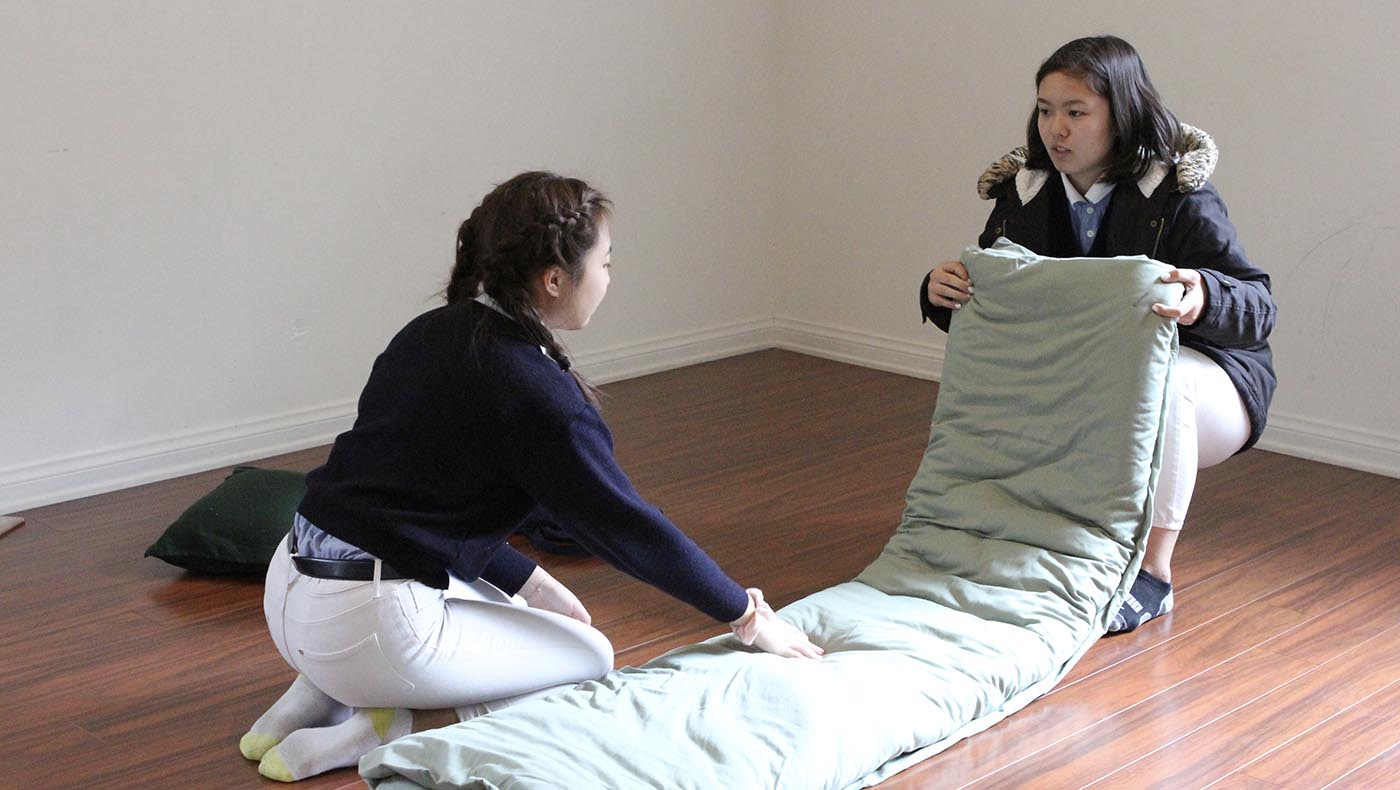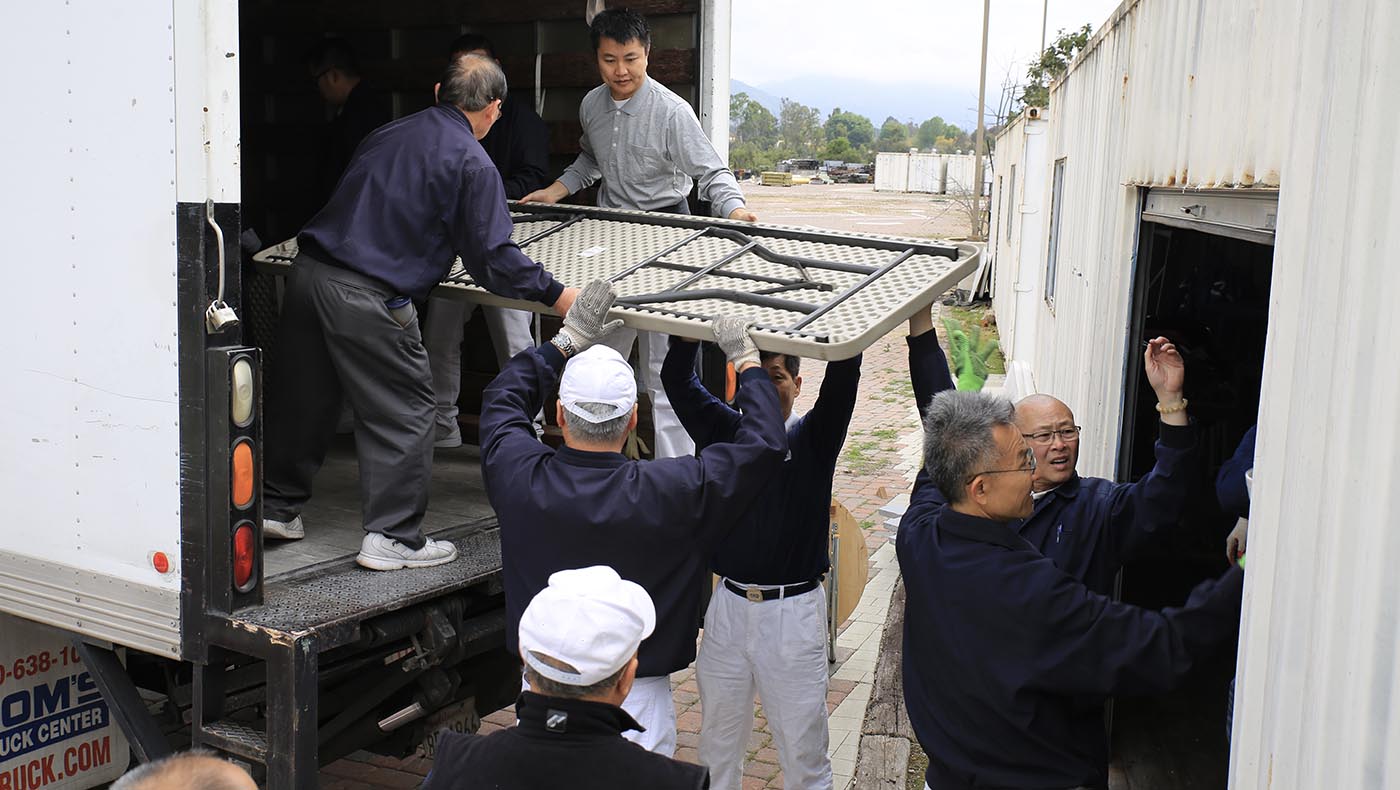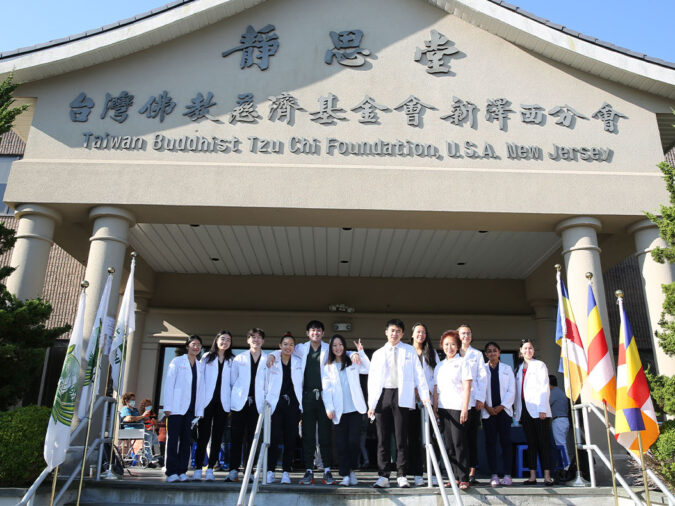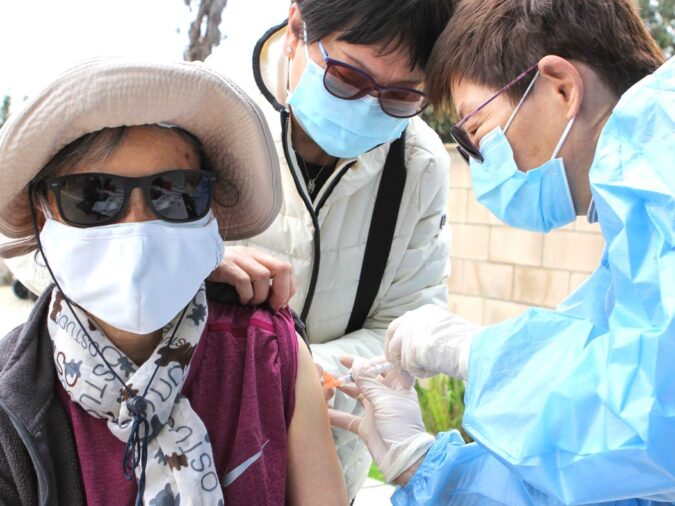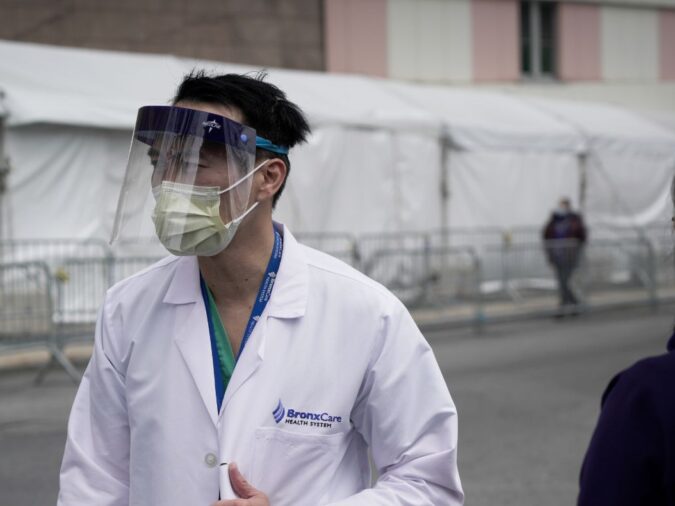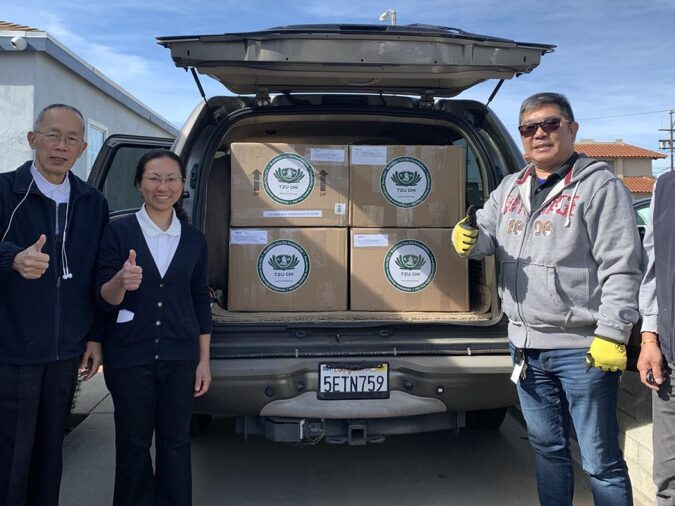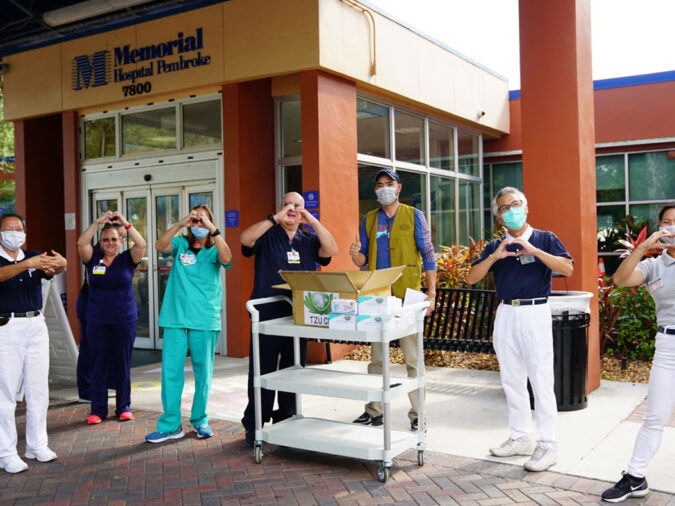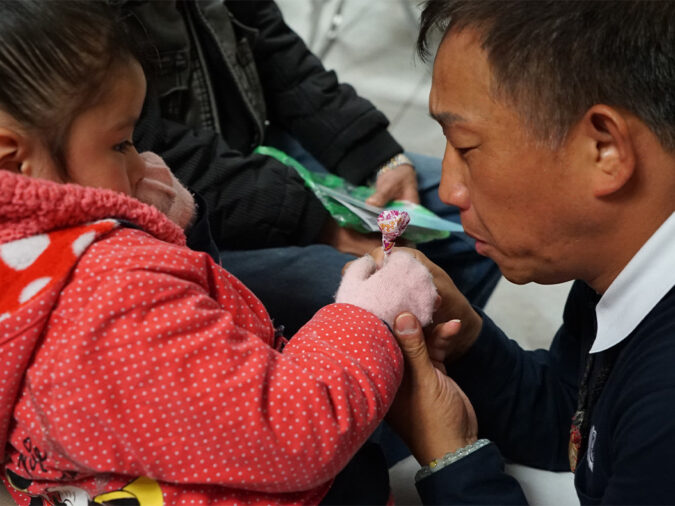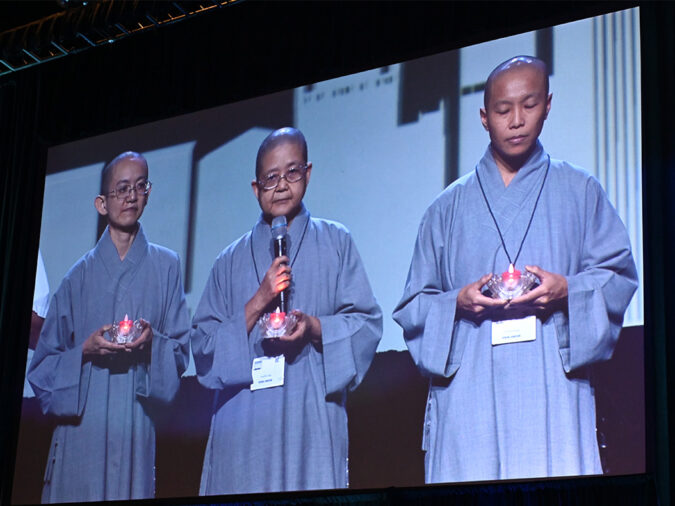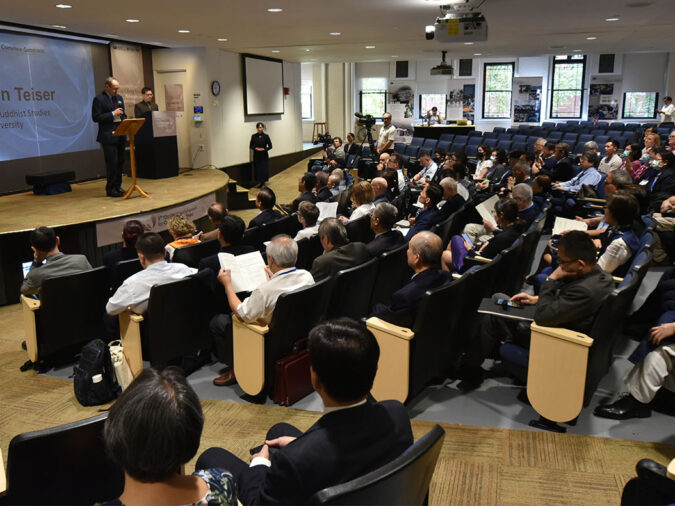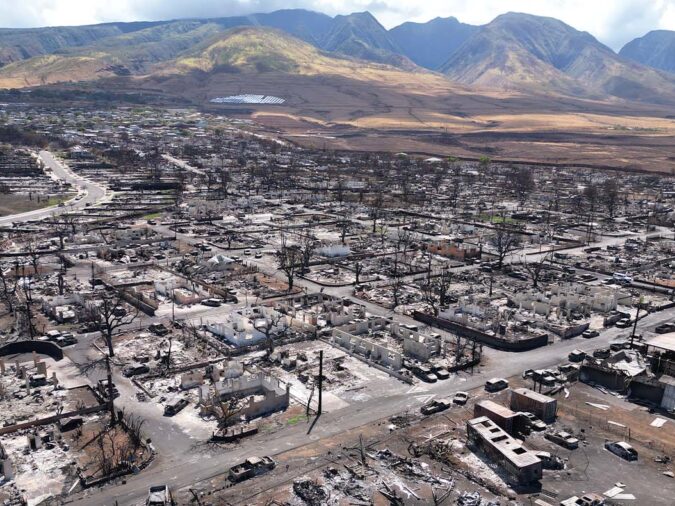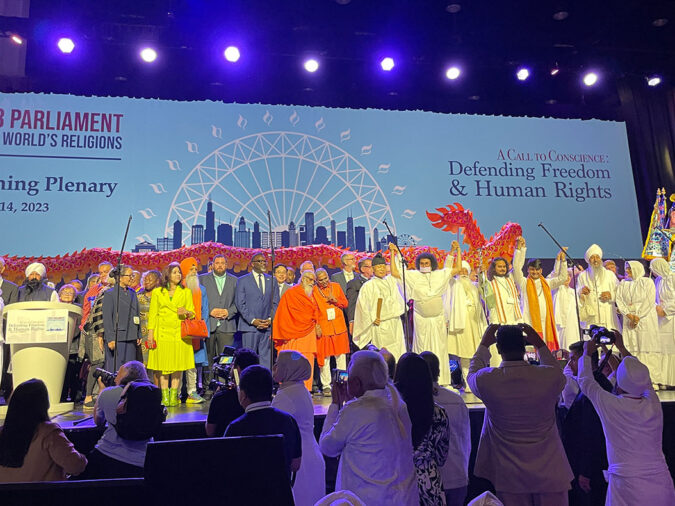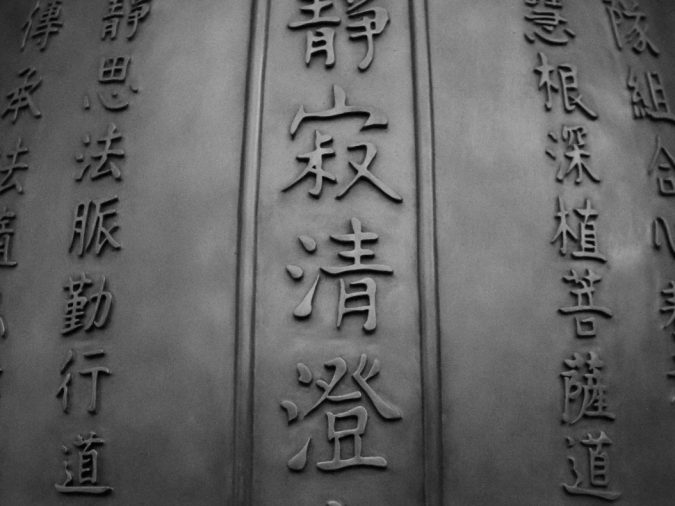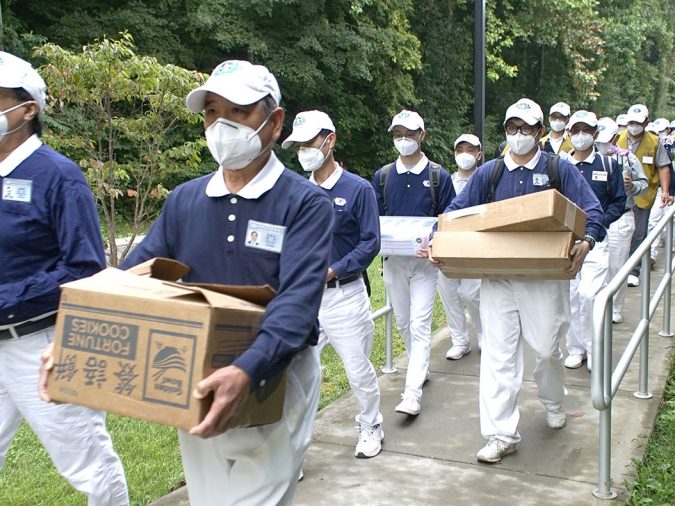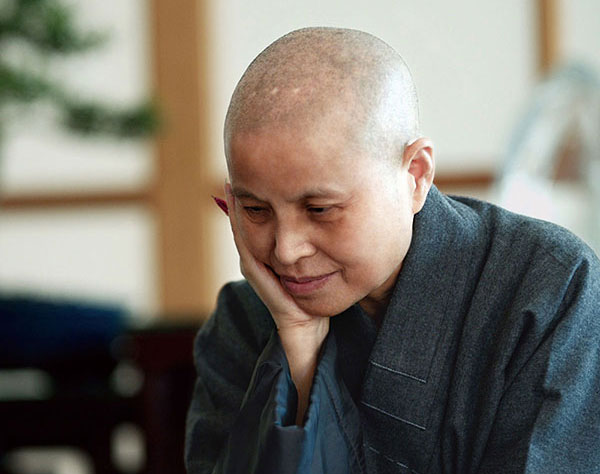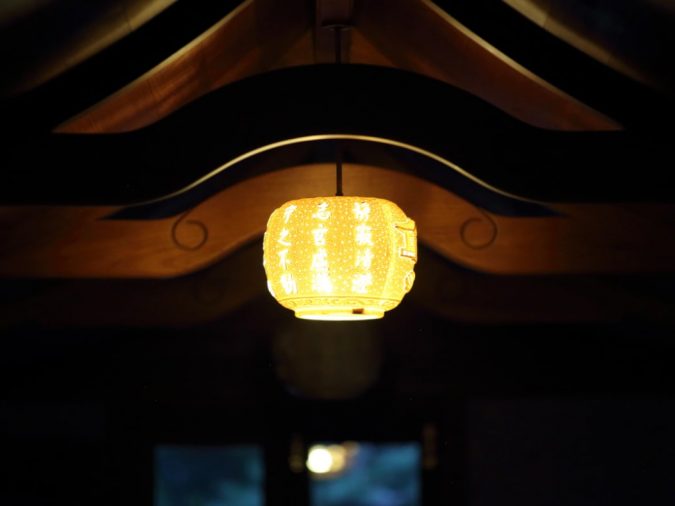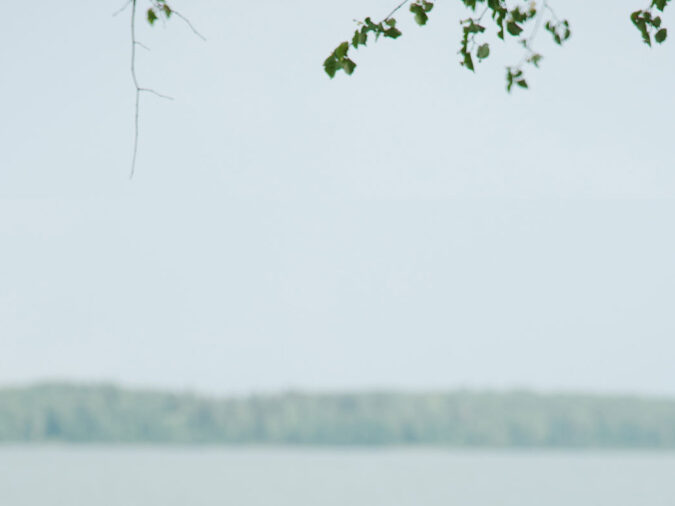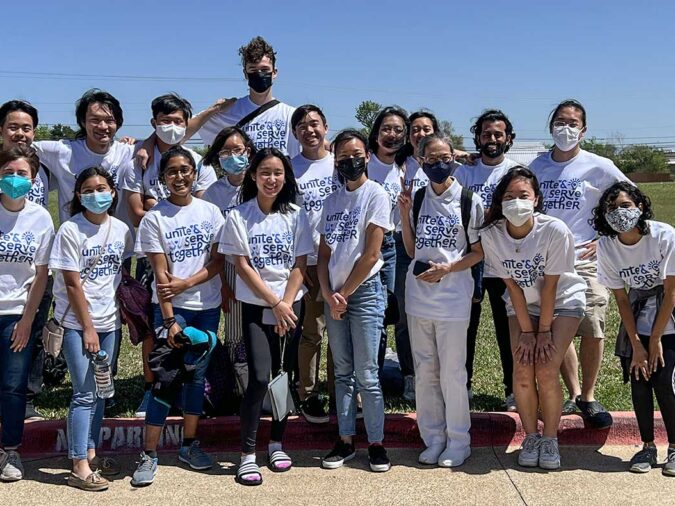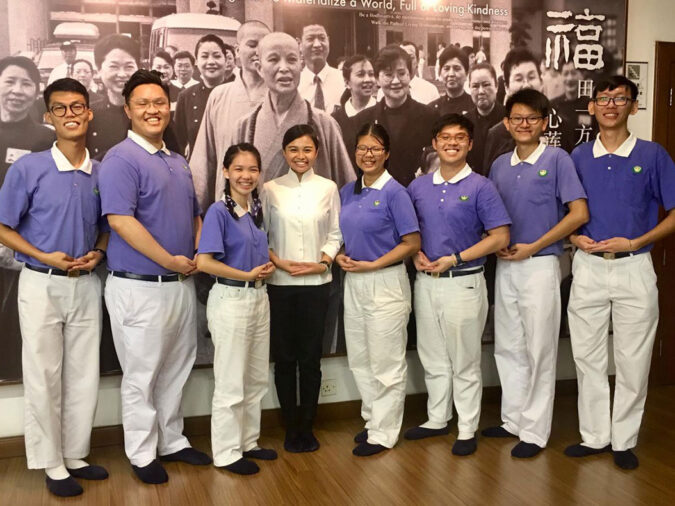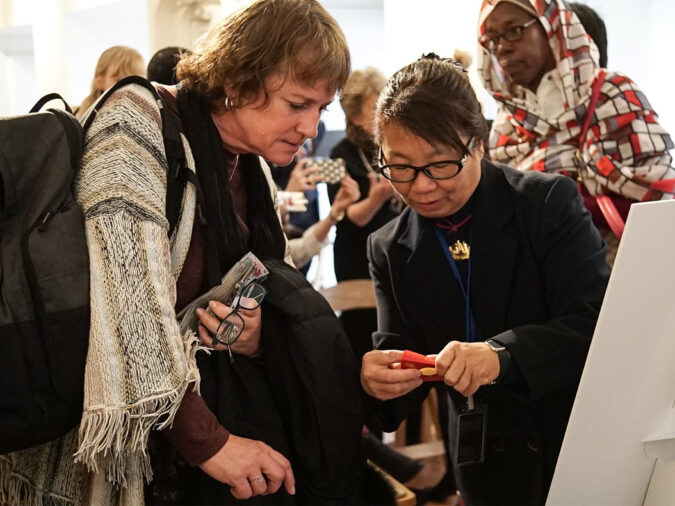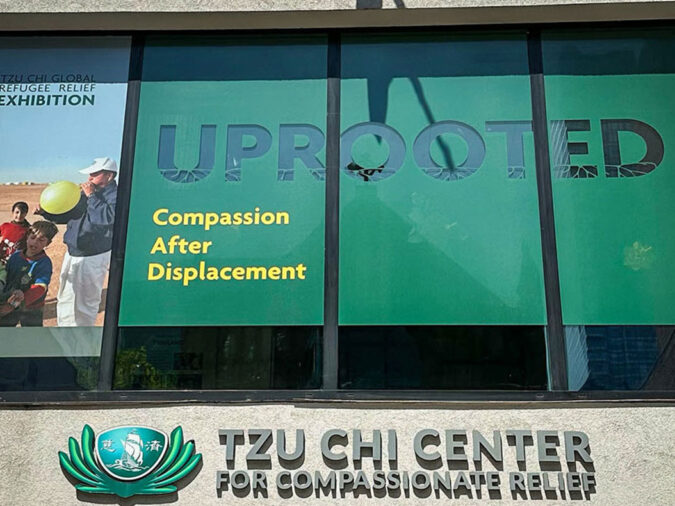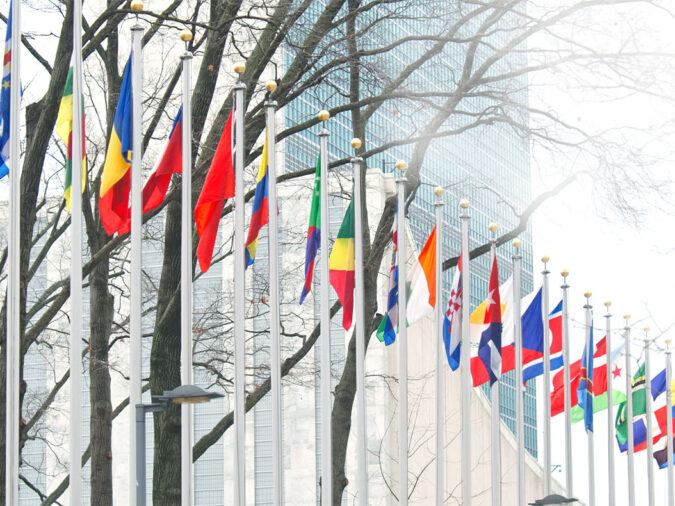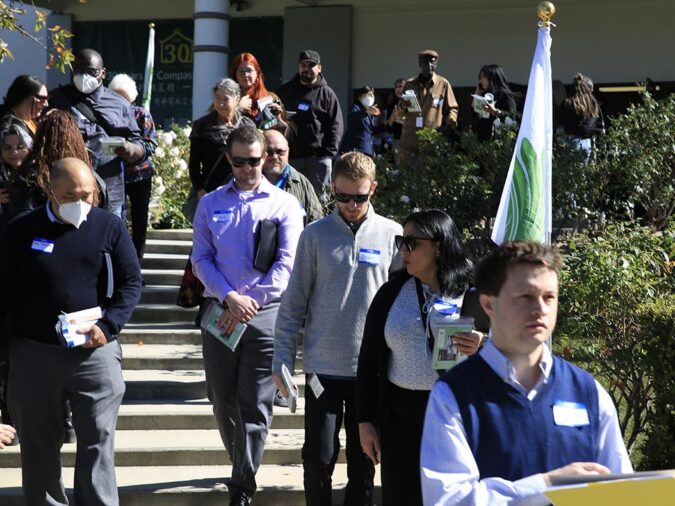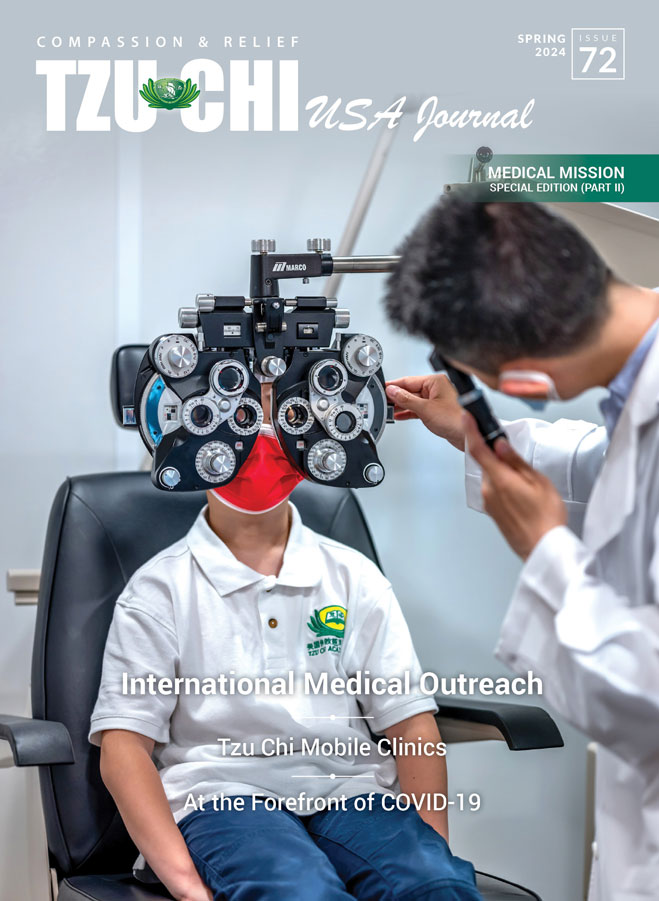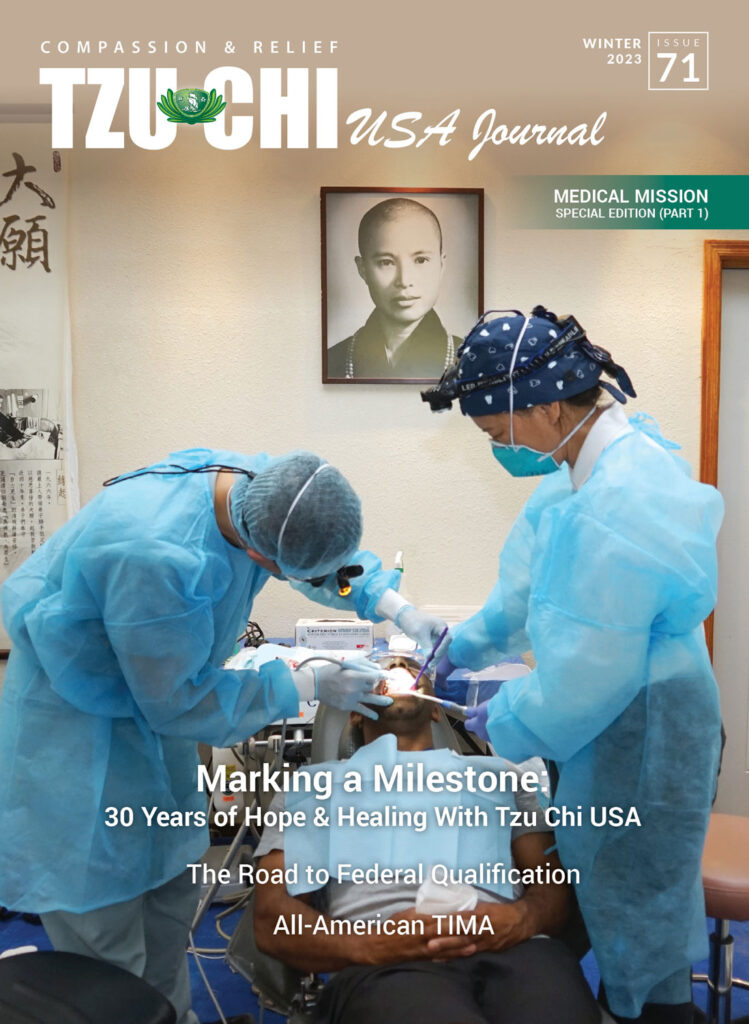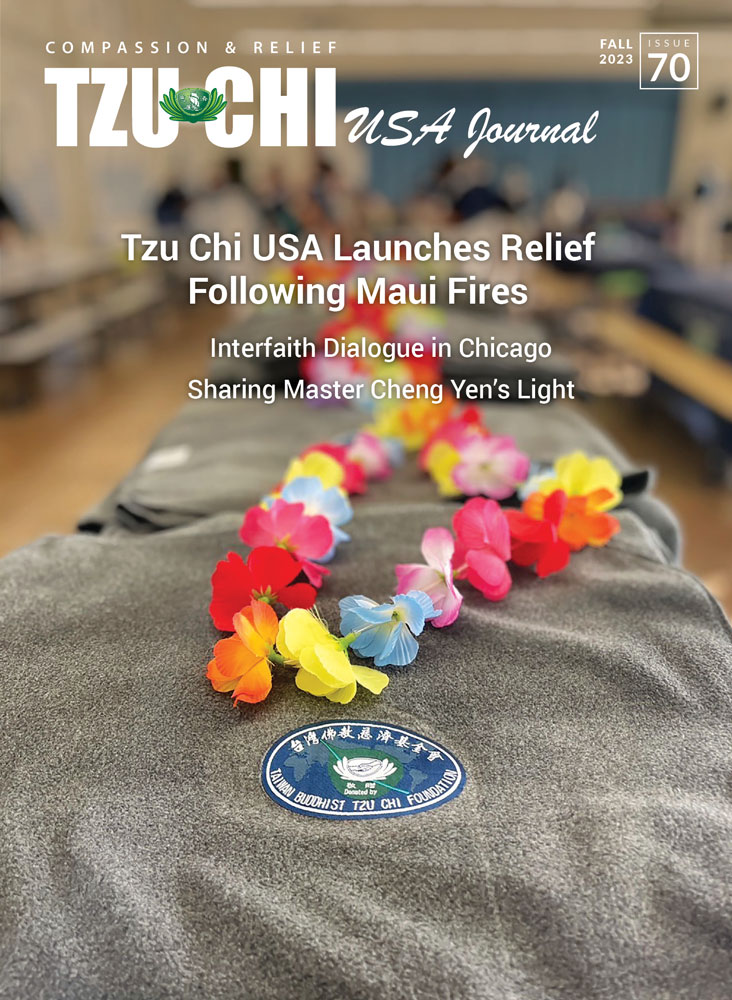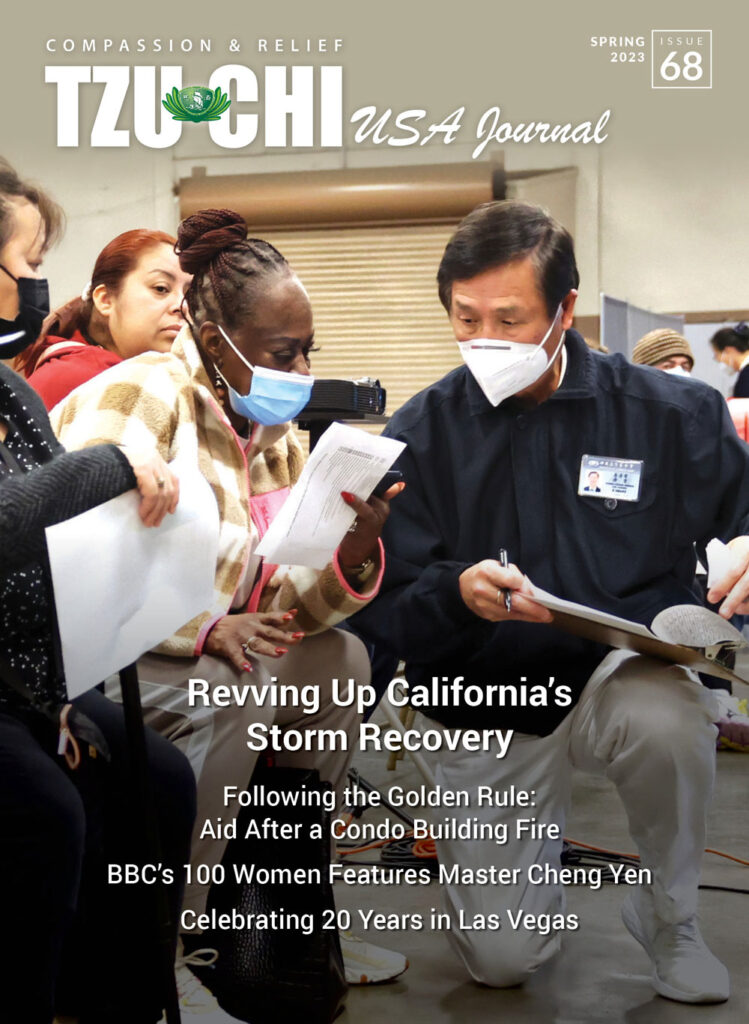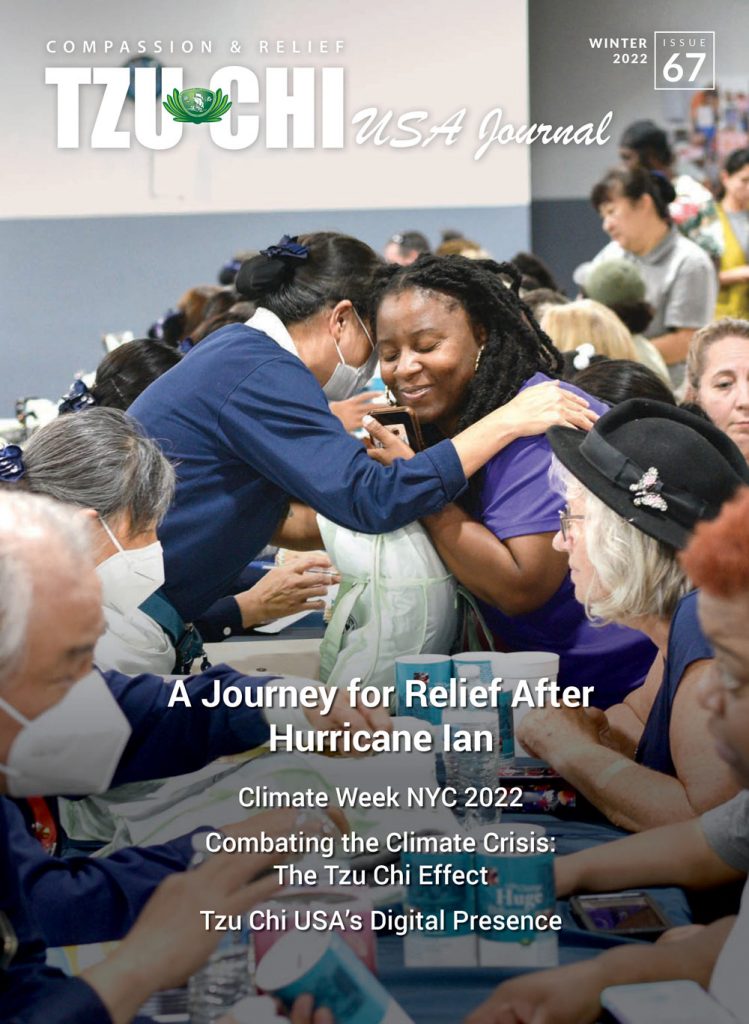CHAPTER 3
TIMA USA National Headquarters Region
Part 4
Written by Jixin Lin, Shuli Lo, Wen Ren, Dilber Shatursun, and Rujing Zheng
Translated by Ariel Chan
Edited by Chenglin Li and Pheel Wang
Published #71 | Winter 2023 Issue
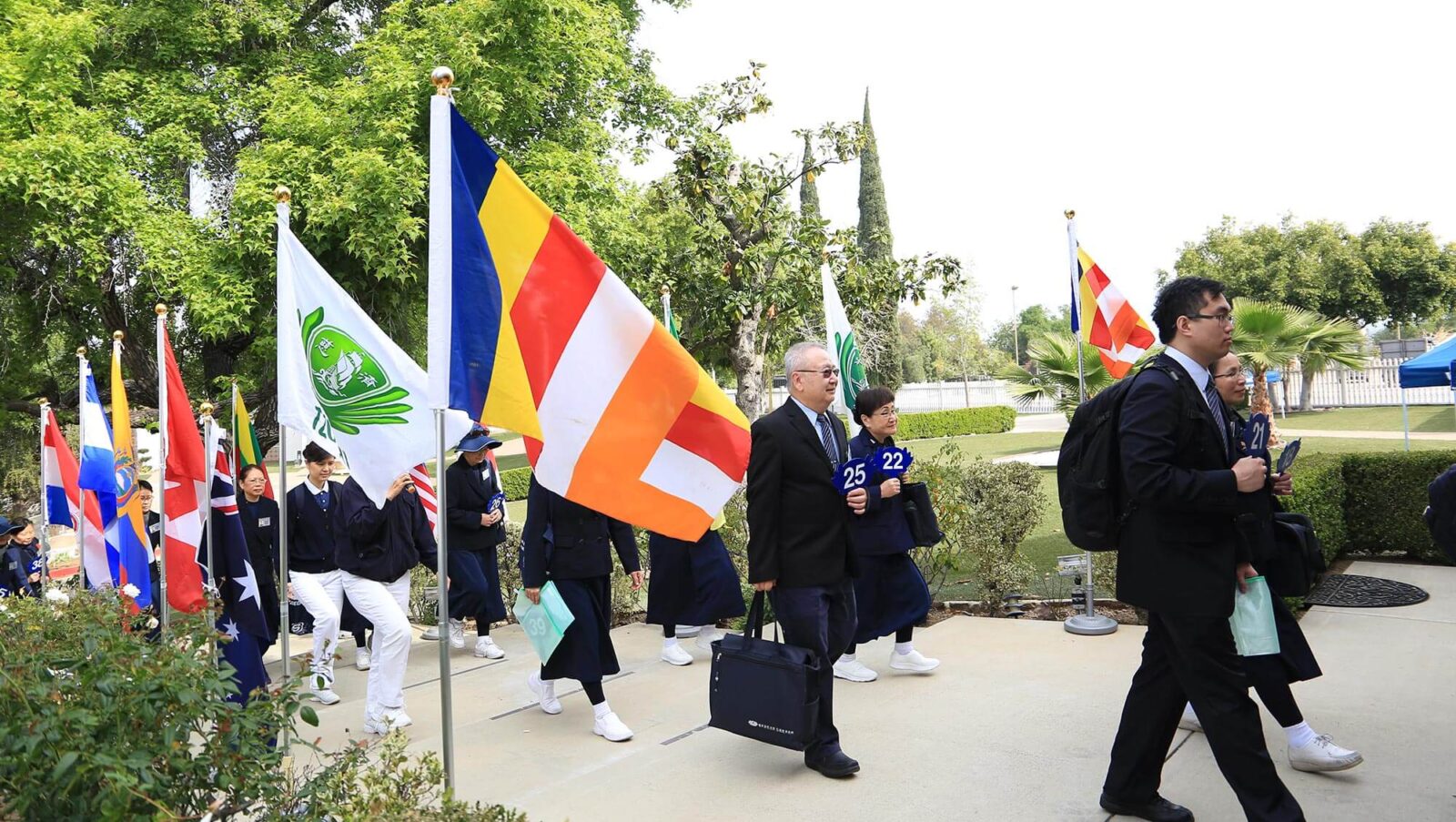
TIMA volunteers from various countries arrive at the Tzu Chi USA National Headquarters campus one after another on March 27, 2019. Photo/Yue Ma
SHARE
Striving for Improvement in Medical Care
“Good morning, everyone! Welcome to Tzu Chi USA: This is your home!” Dr. Han Huang, then CEO of Tzu Chi USA, said on March 29, 2019, at Tzu Chi USA National Headquarters in San Dimas, California. He served as the host and represented Tzu Chi volunteers from across the United States to more than 500 people from 16 countries who had come to participate in the 2019 TIMA Global Forum, whose theme was “Enlightened Wellness.” Everyone exchanged sincere greetings and responded with bright smiles like the golden sunshine of Southern California.
The First TIMA Global Forum in the United States

Under the lead of Tzu Chi volunteers, professional medical staff from different countries, wearing their traditional attire, walked into the Tzu Chi USA National Headquarters San Dimas campus auditorium. Although their language and cultural backgrounds differed, all the participants shared one mindset: During the 2019 TIMA Global Forum three-day conference, they would jointly learn to uphold compassion for people and respect for life. This gathering marked the first time Tzu Chi USA was hosting a TIMA Global Forum, an event held in cities in different countries from time to time.
Professors and researchers from well-known academic medical institutions in the United States, such as the University of Southern California (USC) and the University of California, Los Angeles, were invited to attend and discuss holistic care. Topics included geriatrics, mindfulness-based stress reduction, climate change impact on the human body, traditional Chinese and Western medicine integration, body donation, liver care, ophthalmology, cancer treatment, knee care, and more. The interdisciplinary exchange enabled participants, typically busy studying in their respective fields, to escape from the ivory tower and learn new knowledge and technology from other disciplines.
Aaron T. Hagedorn, Instructional Associate Professor, USC Leonard Davis School of Gerontology, didn’t just share his professional knowledge in geriatrics in this forum: “I listened to the lectures of others. These lectures were very in-depth, just like being in medical school, and I learned interesting knowledge.”
For Gilda Valdez, a Mexican doctor who joined the TIMA Mexico chapter after its establishment in November 2018, integrating Traditional Chinese Medicine (TCM) and Western medicine was her favorite topic at the Forum. As a doctor, she found the courses were particularly helpful in shortening the distance between herself and her patients and broadening what she could offer. “I can treat certain medical conditions through acupuncture while advising patients to use Western medicine, too,” she explained. “Doctors in Mexico generally don’t understand how acupuncture, TCM, yoga and other Eastern techniques, and exercise can help patients, and they look forward to bringing the concepts, experiences, and gains they have learned back to Mexico to share with peers.”

New York physical therapist Yichen Liu, who usually posts videos and articles to teach the public how to exercise correctly and promote scientific knowledge, found that the Forum opened everyone’s eyes, as they learned about the interconnection between each part of the body’s health and that of others. For instance, they wrote in their notes: “The arrangement of teeth and body posture is related to body control. Dentists focus on the dentition and the movable part of the mandible of the temporomandibular joint, while physical therapists treat the whole body. However, problems caused by teeth will affect the body’s activities, and there may also be problems with bodily activities, which in turn affect dental problems. How can we combine physical therapy and dentistry? The cervical spine and the lumbar spine, as well as walking and movement of the shoulders, are closely related. How can dentists and physical therapists find ways to cooperate…”
Participants’ notes also recorded a breakthrough in cancer treatment delivered by the director of the Hualien Charity Hospital: “Glioblastoma Multiforme is extremely difficult to treat, and the patient’s two-year survival rate is low. Xinrong Lin, Director of Hualien Tzu Chi Hospital, is committed to fighting this cancer and has successfully reduced patients’ tumors through targeted drugs…”

Mindfulness-based stress reduction (MBSR) was also a focus of the Forum since more and more medical journal studies have found that physical and mental health are closely related. MBSR instruction can be part of patient treatment and benefit medical staff immersed in high-pressure environments for a long time. “Too many things distract people and prevent them from focusing on the present. People react directly and emotionally to everything, and their mental state is on ‘autopilot.’ Research shows that 32% to 46% of doctors suffer from burnout,” MBSR teacher Lindsey E. Kugel said. “Medical staff are originally very compassionate and can empathize with the suffering of others, but if they’re too focused on patients’ pain, it can easily lead to professional burnout, negative emotions of self-depletion, and a decline in care for the suffering of patients,” Kugel pointed out, as she urged medical staff to listen more, pay attention to every thought, and use mindfulness to never retreat from compassion.
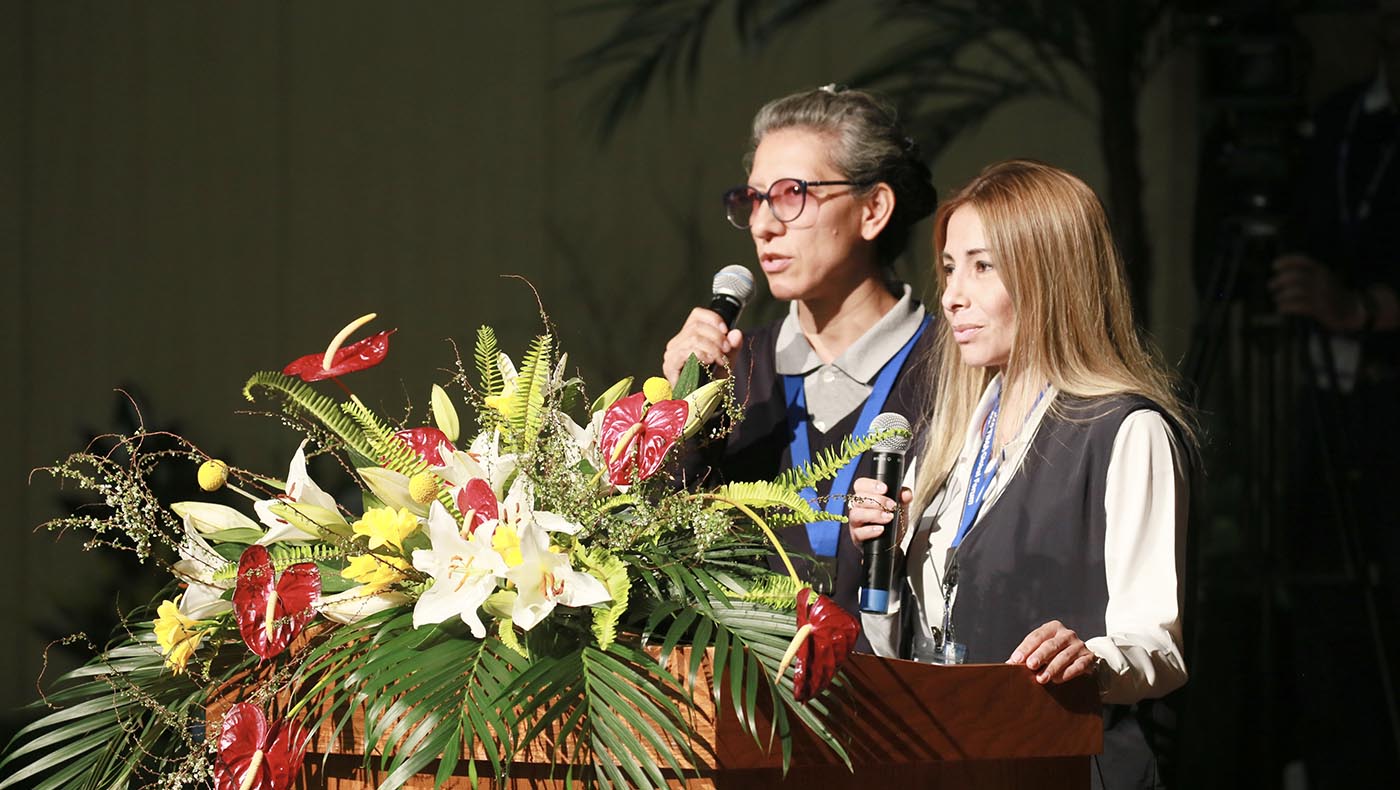
“Tzu Chi’s humanistic medical care is the core value of our medical care, which is completely different from other medical institutions. Currently, other medical institutions are very professional and progressive in academics. Still, their understanding of humanistic medical care is not deep enough,” then-CEO of the Buddhist Tzu Chi Medical Foundation, William Keh, explained as he led the working team to brainstorm ways to bring love and medical expertise together. “In addition to treating patients, our humanistic medicine is also very important. We need to take care of patients with a caring heart. If the patient can’t come to us, we’ll visit the patient,” he said. “Caring for patients with such love is impossible in a utilitarian society like the United States. But when I share our experiences with others, people are willing to follow in our footsteps, participate in free clinics or our activities,” Keh revealed.
Technical and academic discussions are, without a doubt, essential, but awakening a proper approach to medical care is also critical, as captured in the Global Forum’s 2019 central theme and purpose of fostering “Enlightened Wellness.” After listening to the free clinic experiences shared by TIMA volunteers from all over the world, Xochitl Vazquez, a nurse from Mexico, learned how to face suffering with compassion.
I learned new knowledge in this Forum, which changed our mentality towards patients because we’re all human beings and should not differentiate between each other.
Xochiti Vazquez
2019 TIMA Global Forum Participant
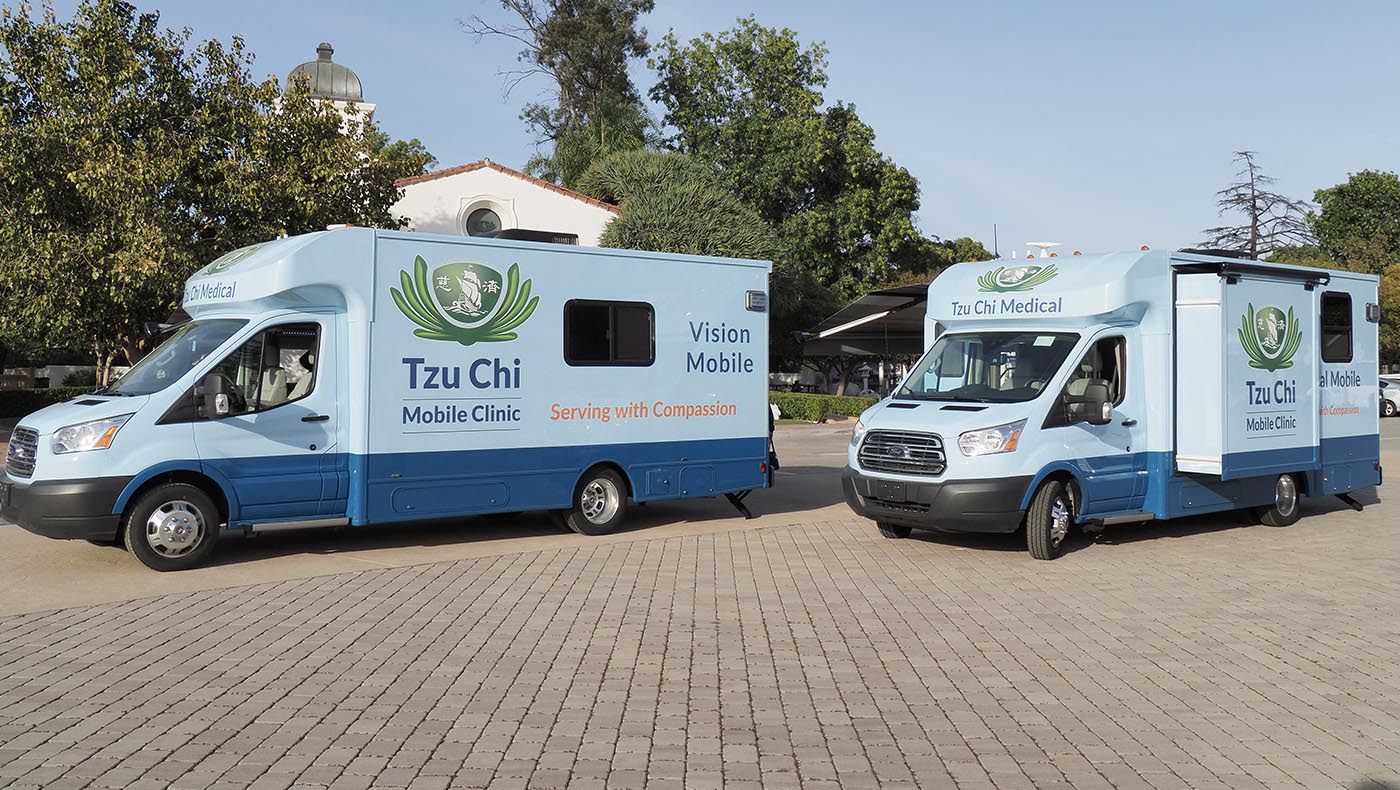
Corina Quintana, an attendee from Guatemala, pointed to the location of her hometown when she followed the tour guide to a world map filled with Tzu Chi flags displayed in a garden on the Tzu Chi USA National Headquarters campus. “I want to put the Tzu Chi flag here!” she exclaimed, vowing to be the first seed to bring Tzu Chi to Guatemala.
The TIMA Global Forum is a baptism of body, mind, and medical skills, gathering the power of global TIMA volunteers and guiding everyone to rediscover the noble original intention of practicing medicine and their root enthusiasm for exploring and advancing life sciences.
Dental Assistant Training
For TIMA volunteers to complement each other, in addition to medical professionals, non-medical professional volunteers must also move forward simultaneously. Before Tzu Chi USA held the 2019 TIMA Global Forum, it trained numerous free clinic assistants with medical standards, especially dental assistants. The scale of each training always started with dozens of people.
Since it’s costly to visit a dental clinic in the United States, and many new immigrant workers and people struggling with homelessness don’t have dental insurance, the demand for Tzu Chi’s free dental clinics is very high. At the free clinics, dental diagnosis and treatment are team efforts. In addition to skilled dentists, it also requires a large number of dental assistants to achieve success.
“It is not easy to find a large number of suitable and qualified dental assistants continuously. Often, people will say, ‘I can’t come today’ or ‘I have something to do next week,’ and then there will be a shortage of volunteers. But our free clinics have never stopped, and we have regular free clinic timetables,” said TIMA dentist Shirley Chen, who is the soul of Tzu Chi’s free dental clinics. The dental team must ensure sufficient assistance for each session not to disappoint the expectations of patients who need care.
After much thought, the best solution was to hold in-house courses to train one’s own dental assistants.
It’s not easy to host free dental clinics. There are a lot of dental equipment, complex projects, and high safety considerations. To give both doctors and patients a safe environment, the assistants must be very skilled. For decades, we’ve trained our own assistants.
Shirley Chen
TIMA Dentist
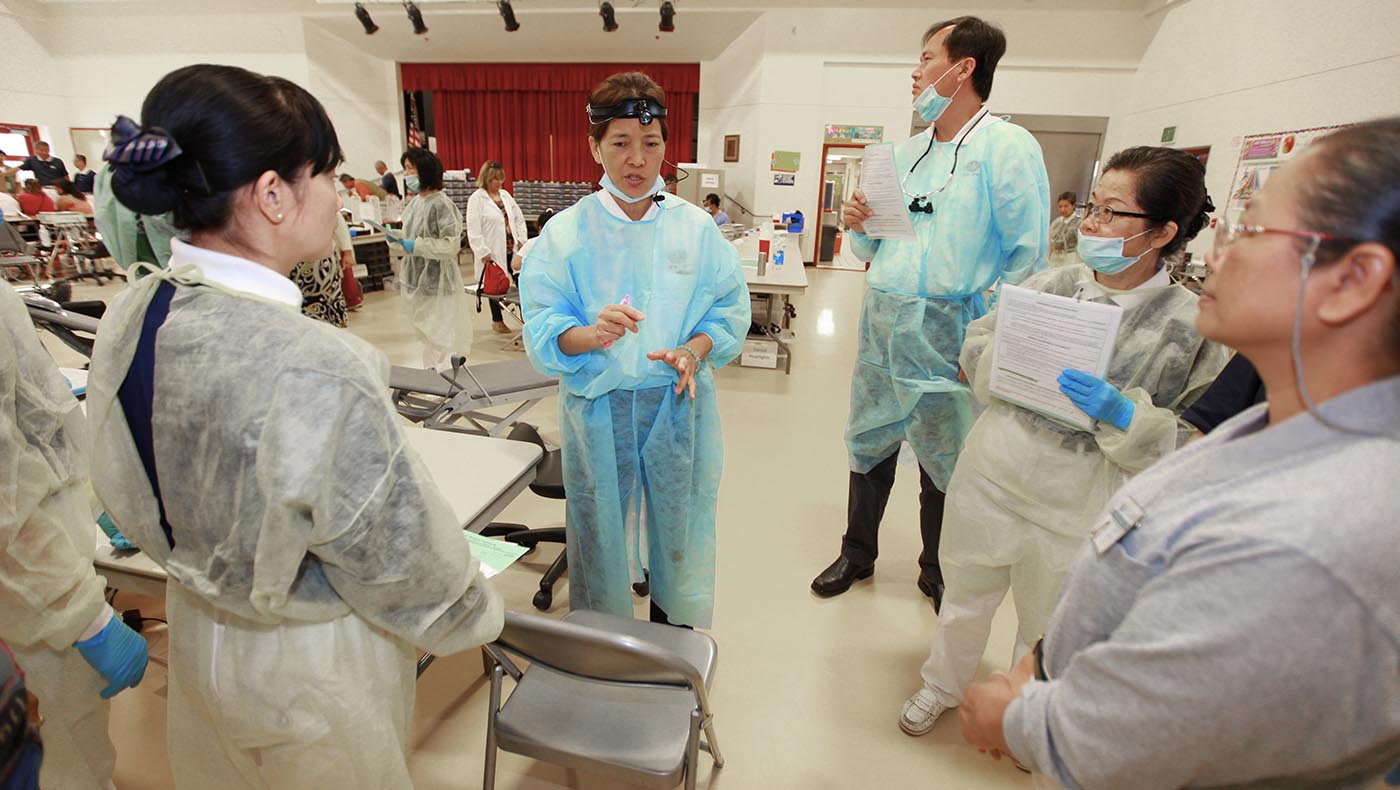
Volunteers trained by Tzu Chi have a huge advantage: They are dental assistants who specialize in “tailor-made” Tzu Chi dental treatments. “Our free clinic service only provides tooth extraction, filling, and cleaning. We focus on training in this area and impart specialized knowledge to them. It doesn’t need to be extensive, such as dental implants, root canals, or corrections. We don’t do any of these at free clinics,” Chen explained. She is very proud of the internal courses she has provided over the years: “We still need our own people to carry and assemble the equipment, help the doctors, clean and disinfect afterward, organize the cabinets, and other things. The disciplines are different, and dentistry is a free clinic project requiring a large team.”
The large amount of work that a dental assistant needs to undertake after assuming the job requires a lot of effort. However, everyone adheres to Master Cheng Yen’s guidance on the right approach: “Be willing to do it and enjoy it wholeheartedly” and “Don’t underestimate yourself because people have unlimited possibilities.” Thus, Tzu Chi volunteers study without hesitation, and the final results are gratifying.
Dental diagnosis and treatment are a collaborative process comprising five workstations. The team will assign specific dental assistants to each workstation.
First, there is the assembly workstation and team. “Dental assistants in this unit must transport equipment, dental chairs, many pipelines, water and gas, air compressors, etc.,” Chen explained. “They also need to know how to assemble the equipment and connect water, gas, and electricity to the right pipes to let electricity, air, and water come in.”
Next is the central supply station. Volunteers organize and place all the required and sterilized utensils and materials in this area so that everyone can see all the equipment at a glance. Of course, there is also a dental X-ray station, which requires volunteers to know how to take oral X-rays and then print them out on a computer for diagnosis by the doctor. There is also a dental assistant next to the treatment chair. These assistants are responsible for helping the doctor, delivering equipment and dental materials, adjusting the lighting, and pumping the mouth. In the last group of sterilization stations, assistants must sterilize used dental instruments before the items can return to the central supply station, where they will be sorted and used for the following medical session.
“The disinfection process is very rigorous,” Chen pointed out. “Dental assistants must understand the disinfection process. What to throw away? How to throw it away? How to sort everything, remove the needle, discard the medicine, brush off the blood, and then clean the blood and re-categorize what needs ultrasonic cleaning for disinfection,” she explained. Finally, “Tooth filling and tooth extraction equipment can only go back to the central supply station after cooling to ensure that the supplies in the central supply station are clean,” Chen said.
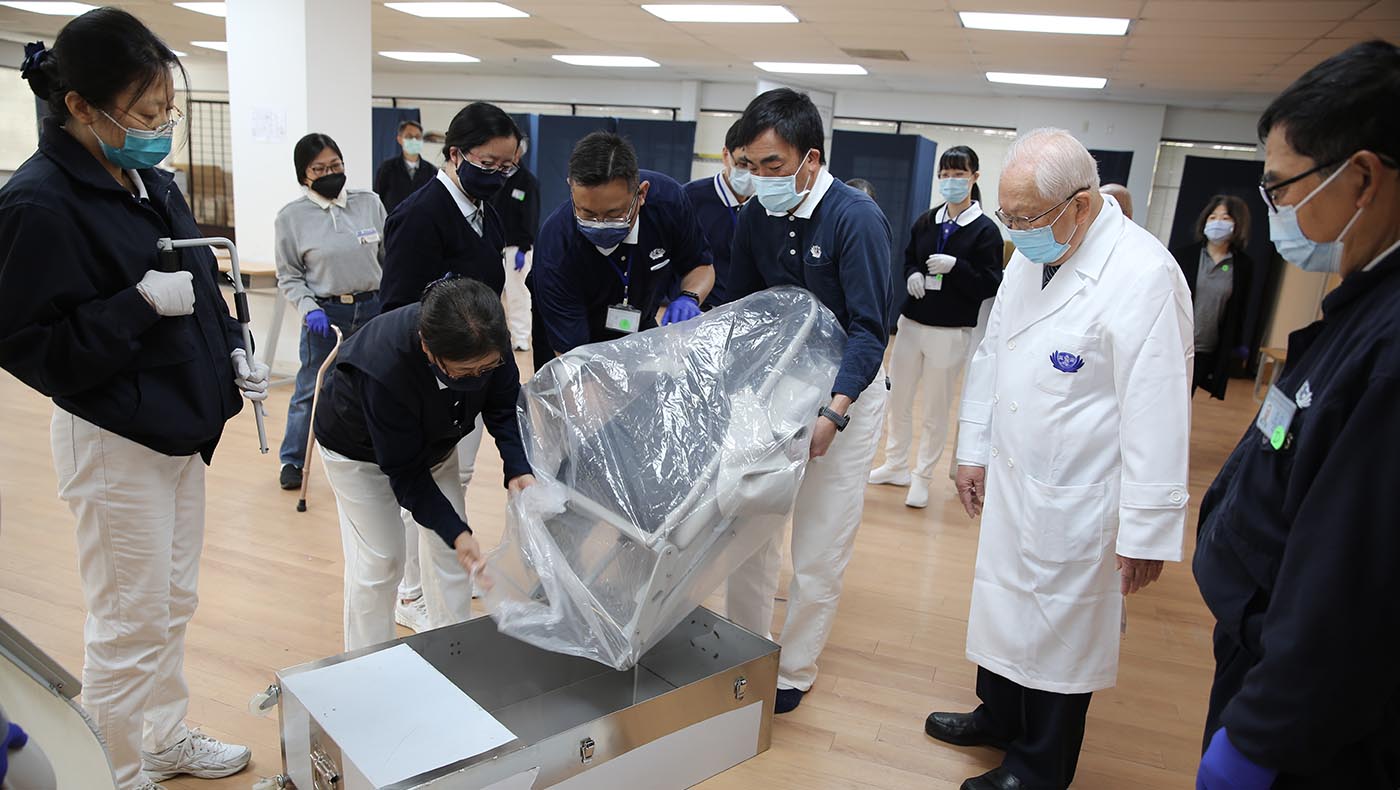
Dental treatment is a minor surgical procedure in a free clinic.
Shirley Chen
TIMA Dentist
Dental assistants will also face some dangers while sterilizing dental instruments since they are relatively sharp and have germs and blood on them. Only a very professional assistant can handle them properly. “We require that the blood be cleaned immediately after use because if not cleaned immediately, it will contain germs. The instruments must be treated on-site so that they can be used efficiently in the next event,” Chen detailed. She has trained countless outstanding dental assistants over the years. These Tzu Chi volunteers are active in every free dental clinic, working diligently and tirelessly.
“Free clinics must be run by volunteers from TIMA, who must comply with standard operating procedures and, at the same time, help many doctors on site. In short, whether they’re assisting our own doctors from TIMA or outside doctors who come to participate in free clinics, our volunteers must meet high professional medical standards at every step,” Dr. Shirley Chen concluded.
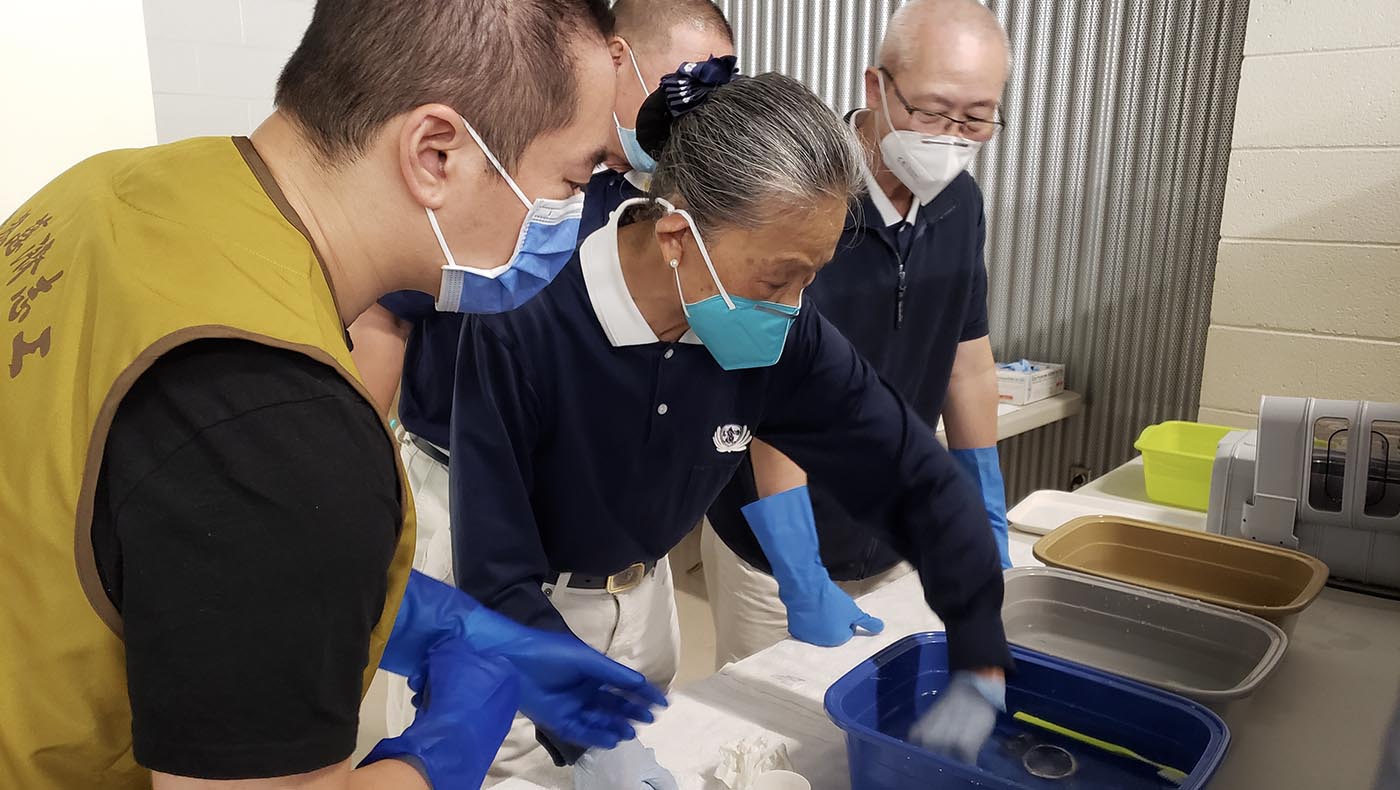
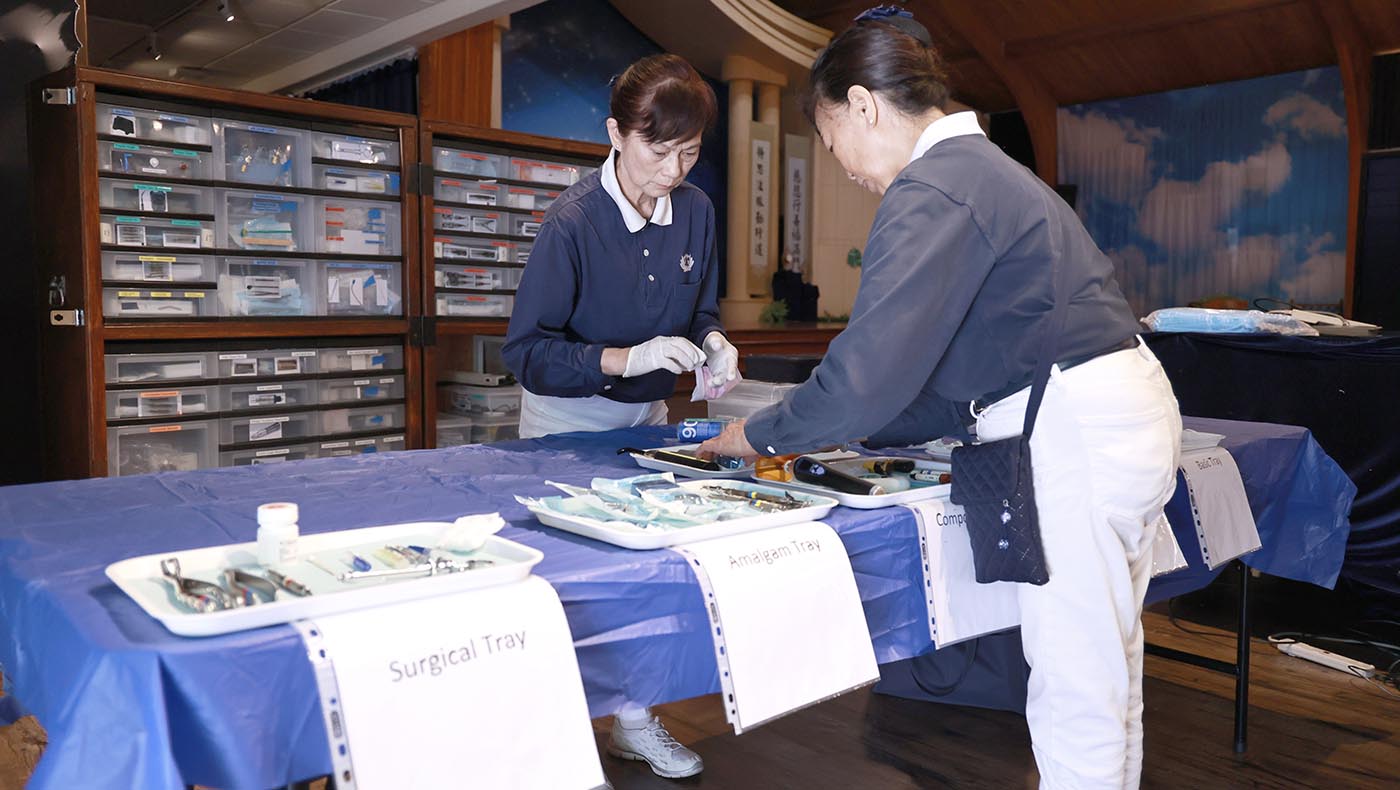
Copy, Paste, Inherit
Over the past thirty years, TIMA and Tzu Chi volunteers in the Tzu Chi USA National Headquarters Region have established standard work procedures for free clinics in the region, and the volunteers’ ingenuity is visible everywhere. The foundation laid by the senior volunteers who pioneered the mission in the early days became one of the main reasons the free clinic system enjoys an infinite life. “We first set up a core team and decided how many free medical clinic stations should be included in the service area. Each station would have a station manager and two deputy station managers to take charge of it and establish an inheritance mechanism,” recalled Wendy Kung, a TIMA registered nurse who first planned the system, along with other volunteers, back when she was a community medical officer. The protocol was conducive to “copying” and “pasting” free clinics in other areas, thus, in the past 30 years, free clinics successfully expanded outwards based on this model with convenience and flexibility.
When a free clinic is to start, the core team holds a meeting first to set up the method of conducting the event. When the plan matures, the team will invite local community volunteers to a meeting concerning the process of the free clinic and the human resources required. It will then begin to recruit more volunteers. Two weeks before the free clinic, there will be a briefing session to invite all participating volunteers to learn the methods of the free clinic and the mission behind it. A leading core team is always helpful in organizing free clinics. Today, volunteers from various local TIMAs follow this system, allowing free clinics of all sizes to operate in an environment with sufficient human resources exhibiting Tzu Chi’s humanistic approach and medical expertise.
From 1993 to the present, with 30 years of ups and downs and lots of laughter, TIMA USA National Headquarters Region volunteers can be seen everywhere, from Alhambra to San Bernardino, and in Central California, Los Angeles, East Coachella Valley, Santa Ana, San Diego, San Gabriel Valley, Las Vegas, and Phoenix. As Master Cheng Yen taught: “Everything starts from a determination, a seed.” A seed of perfection 30 years ago has now taken root, sprouted, blossomed, and produced abundant and gratifying fruits.
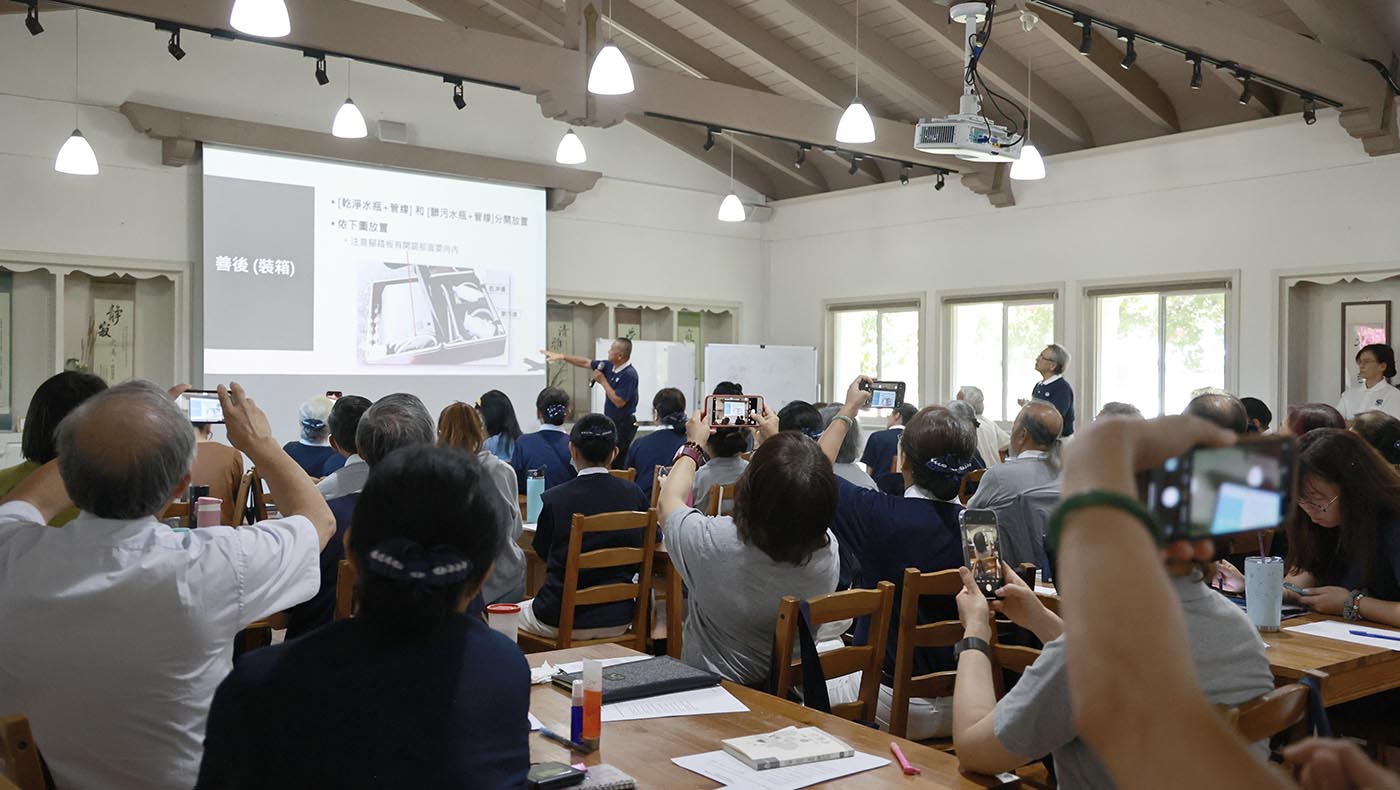
SHARE:
